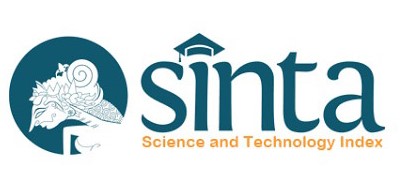Axilary Block Ultrasound Guiding in Patient with Pseudoaneurysm Regio Brachii Sinistra pro Repair Pseudoaneurysm
Abstract
Background: An aneurysm may be a true aneurysm or a pseudoaneurysm. Pseudoaneurysm is defined as a defect in the arterial wall, making a connection between the lumen and the extraluminal space. The main etiology of brachial artery pseudoaneurysm is incidental arterial puncture during venous cannulation for hemodialysis.
Case:: Anesthetic management was performed on a female patient 56 years old, body weight 45 kg, height 150 cm. The patient had other comorbidities such as hypertension, diabetes mellitus, chronic renal kidney with a diagnosis of left brachial pseudoanuerysm. Pro Pseudoanurysm repair surgery. The anesthetic technique uses axillary peripheral nerve block with ultrasound guiding. The duration of surgery is ± 120 minutes. After the operation, the patient was treated in the hospital ward.
Conclusion: Choosing the most appropriate anesthetic technique for patients with renal impairment is necessary to maintain normovolemia and normotension in order to avoid unexpected complications. Using regional anesthetic technique for sympathetic nerve block may be favorable in these patients. With ultrasound guiding, the incidence of failure is lower, the time required is shorter, the latency is shorter, the blockade is longer, and the risk of accidental vascular puncture is lower so that vascular lesions are less likely.
Keywords
Full Text:
PDFReferences
Saad NE, Saad WE, Davies MG, Waldman DL, Fultz PJ, Rubens DJ. Pseudoaneurysms and the role of minimally invasive techniques in their management. Radiographics. 2005. Suppl 1:S17389
Deşer SB. Management of iatrogenic brachial artery pseudoaneurysm: surgical treatment of iatrogenic brachial artery pseudoaneurysm. International Journal of the Cardiovascular Academy. 2017 Mar 1;3(1-2):9-10.
Wang A, Silberzweig JE. Brachial artery pseudoaneurysms caused by inadvertent hemodialysis access needle punctures. American Journal of Kidney Diseases. 2009 Feb 1;53(2):351-4
Mirza F, Brown AR. Ultrasound-guided regional anesthesia for procedures of the upper extremity. Anesthesiology research and practice. 2011 May 30;2011.
J. G. D’Alessio, M. Rosenblum, K. P. Shea, and D. G. Freitas,. A retrospective comparison of interscalene block and general anesthesia for ambulatory surgery shoulder arthroscopy. Regional Anesthesia and Pain Medicine,vol. 20, no. 1,1995.
A. R. Brown, R. Weiss, C. Greenberg, E. L. Flatow, dan L. U. Bigliani, Interscalene block for shoulder arthroscopy: comparison with general anesthesia Arthroscopy, vol. 9, no.3 1993.
Lopera-Velásquez LM, Restrepo-Garcés C. Ultrasound and nerve stimulation-guided axillary block. Colombian Journal of Anesthesiology. 2016
Hadzic A, editor. Hadzic's textbook of regional anesthesia and acute pain management. 2nd ed. New York, USA: McGraw-Hill Education. 2017
Chan VW, Perlas A, McCartney CJ, Brull R, Xu D, Abbas S. Ultrasound guidance improves success rate of axillary brachial plexus block. Canadian Journal of Anesthesia. 2007 Mar;54(3):176-82.
Wagener G, Brentjens TE. Anesthetic concerns in patients presenting with renal failure. Anesthesiology clinics. 2010 Mar 1;28(1):39-54.
Kusudo K, Ishii K, Rahman M, et al. Blood flow-dependent changes in intrarenal nitric oxide levels during anesthesia with halothane or sevoflurane. Eur J Pharmacol. 2004;498:267–73
Salifu MO, Otah K. Perioperative management of the patient with chronic renal failure. 2021
Annat G, Viale JP, Bui Xuan B, et al. Effect of PEEP ventilation on renal function, plasma renin, aldosterone, neurophysins and urinary ADH, and prostaglandins. Anesthesiology 1983;58:136–41.
Li Y, Zhu S, Yan M. Combined general/epidural anesthesia (ropivacaine 0.375%) versus general anesthesia for upper abdominal surgery. Anesth Analg. 2008;106: 1562–5.
Martins LE, Ferraro LH, Takeda A, Munechika M, Tardelli MA. Ultrasound-guided peripheral nerve blocks in anticoagulated patients–case series. Brazilian Journal of Anesthesiology (English Edition). 2017;67(1):100-6
DOI: http://dx.doi.org/10.21776/ub.jap.2022.003.01.03
Refbacks
- There are currently no refbacks.

This work is licensed under a Creative Commons Attribution 4.0 International License.









.png)

